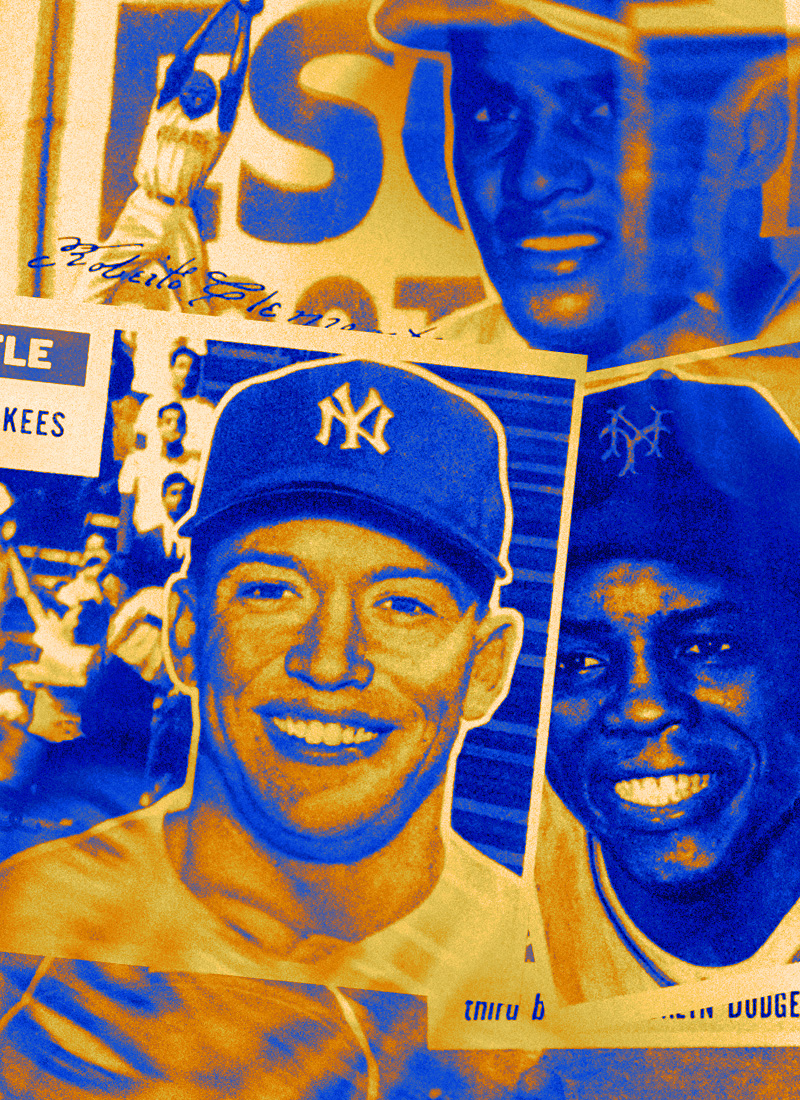
Legendary Set, Legendary Players
A Golden Age
If the past is a foreign country, 1956 is one of those places most of us have visited. Elvis Presley first debuted on the charts, Norma Jean changed her name to Marilyn, and the Cold War was in full swing even as the suburbs continued to expand. The first baby boomers turned ten that year, so the timing couldn’t have been better for Topps to end its five-year bidding war for player contracts with Bowman. Topps printed 340 cards in the set, compared to just 206 the previous year, but as a function of the historical moment, the unique appeal of the 1956 cards is ultimately beyond quantification.
For a nickel, collectors could get a stick of gum and six cards. For many children, who knew the game through box scores and an occasional grainy black-and-white game on television, the bright, full-color photos on the cards were as close as they could get to their favorite players.
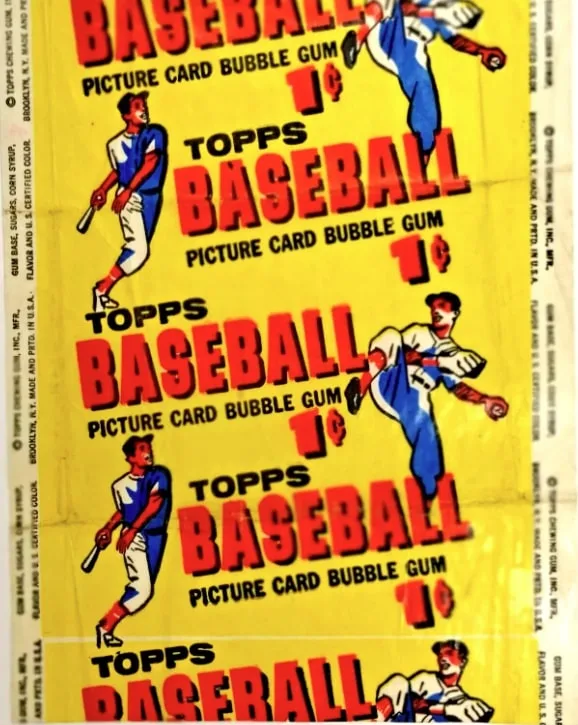


Unwrapped 1956 Topps Baseball wax packs
The set included a powerful roster of players nearing the end of legendary careers, including Bob Feller, Phil Rizzuto, and Jackie Robinson, as well as a host of future HOF’ers in their early careers: Luis Aparicio, Don Drysdale, Sandy Koufax, and Frank Robinson.
Measuring 2-5/8” by 3-3/4”, the set was slightly larger than subsequent sets. The size and horizontal design provided a perfect setting for quintessential player portraits and memorable action shots as a backdrop. The cards also featured player signatures, with nicknames – “Pee Wee” Reese, “Whitey” Ford, and “Duke” Snider – highlighted whenever possible.
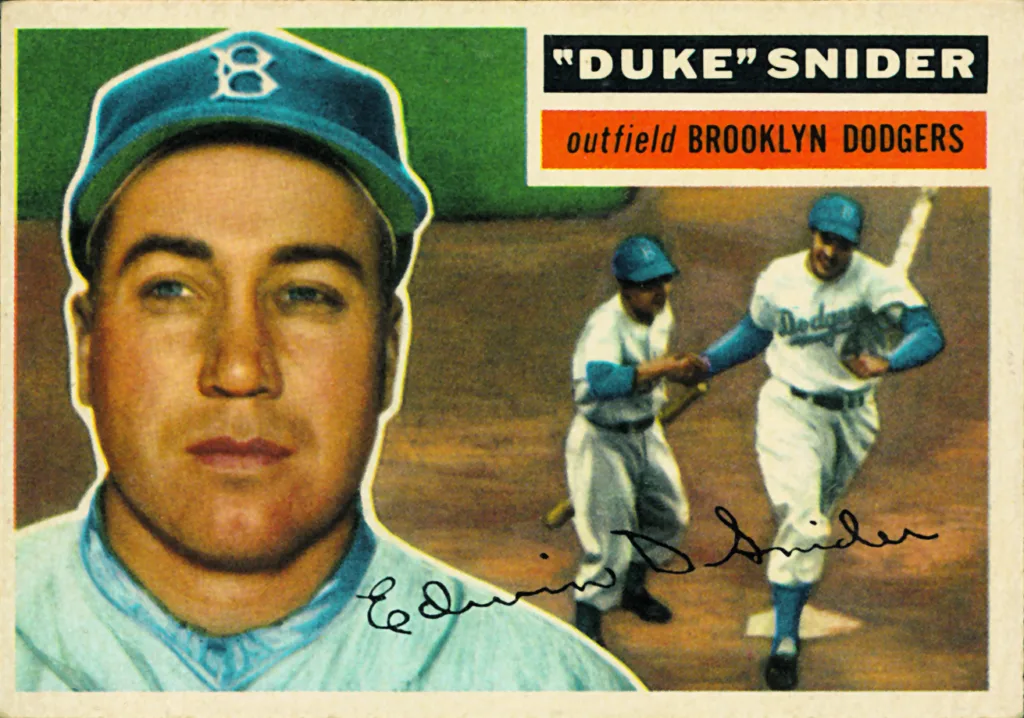
1956 Topps Baseball #150 Duke Snider
1956 Topps Baseball: Best of the Best
For good reason, Mickey Mantle’s 1956 card is the best-known and most highly valued card in the set. That summer, Mantle would win the triple crown, turning in a .353 batting average with 52 HRs and 130 RBI. Moreover, because Mantle had been fulfilling a contract with Bowman in the preceding years, his likeness had not appeared with Topps since the ’53 set.
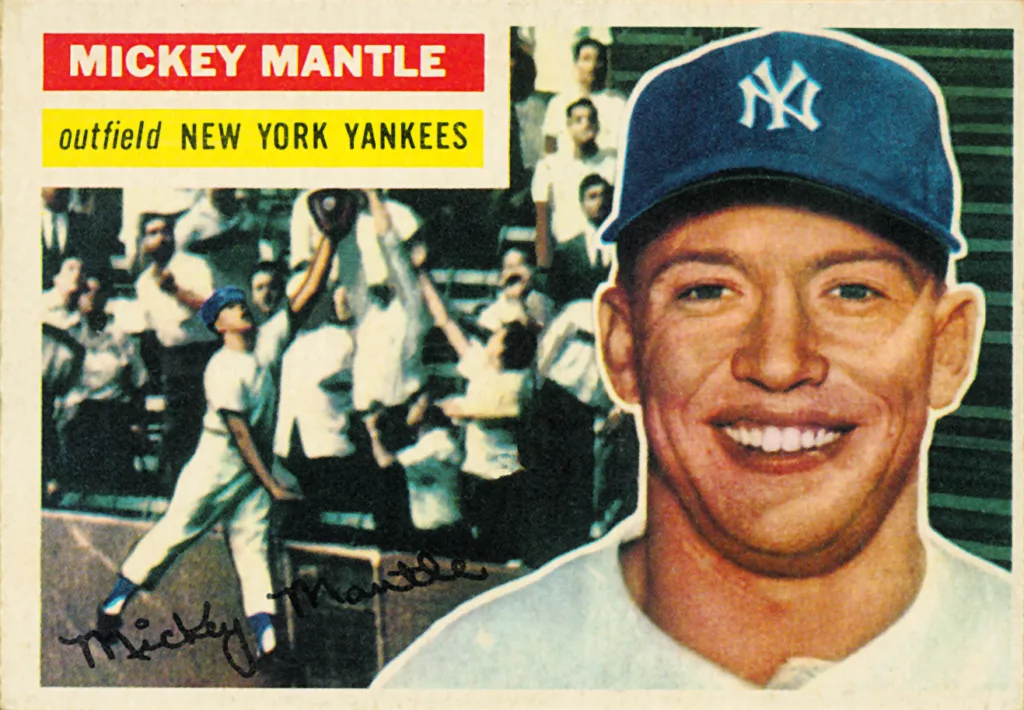
1956 Topps Baseball #135 Mickey Mantle
Still, as with so many cards in the set, something in the Mantle card transcends efforts to explain its monetary value. The combination of his bright smile, a reflection of mid-century American optimism, and a perfectly timed photograph showing a leap halfway into the bleachers has only increased the card’s appeal. The 1956 cards are best understood as a cornerstone piece of Americana. Like a Frank Lloyd Wright home or a 1957 Corvette, we know they were ultra-modern at their debut, but we can only access them now as vintage.
It wasn’t just Mantle who gave the photographer a glowing smile. Willie Mays looks positively jubilant in his portrait, and Luis Aparicio appears to be on the verge of laughter. Even the notorious grouch and greatest hitter ever, Ted Williams, offered a competent grin. Many of the portraits lock eyes with the camera, and the few that don’t – including Hank Aaron’s, which shows him gazing into the distance – are equally engaging and personable.
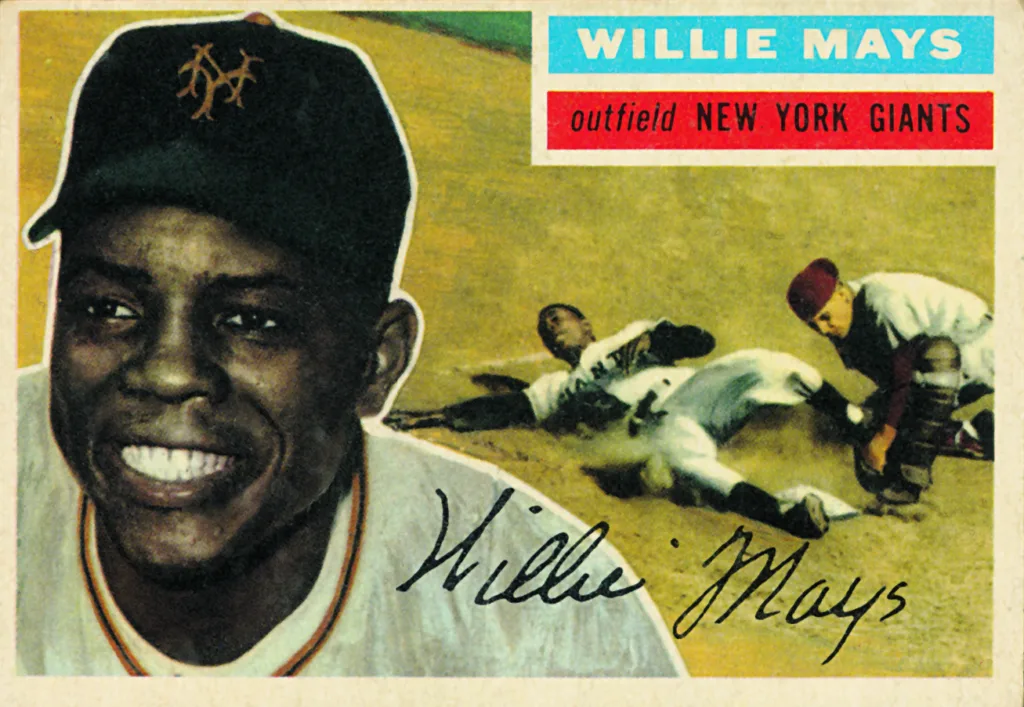
1956 Topps Baseball #130 Willie Mays
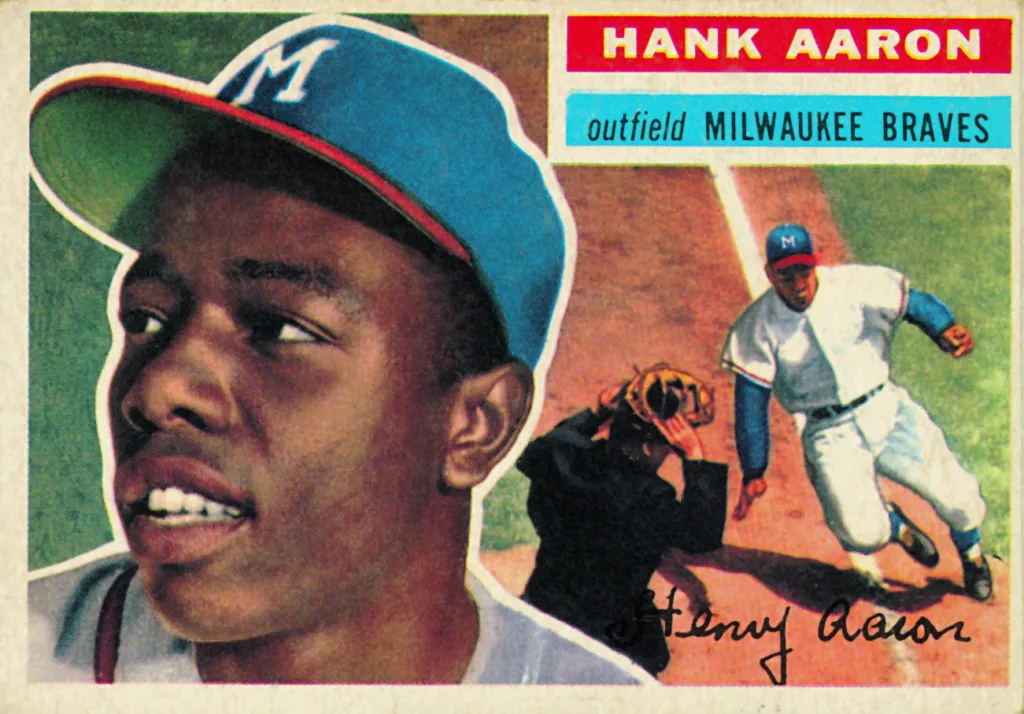
1956 Topps Baseball #31 Hank Aaron
Unique Features in 1956 Topps Baseball
The set was the first to include two dull but helpful “checklist” cards. The American League and National League presidents were also honored with cards. Team cards were issued, one for each of the 16 MLB squads, featuring team photos on the front and information about club records and home stadium design on the back.
Serious collectors have noticed that the 1956 card-backs were printed in both gray and white. For cards numbered 1-100, the gray variety is considered slightly rarer, while for numbers 101-180, the white backs are (marginally) more highly valued. The persistence of printing errors made off-center cards relatively common, and the larger size of the cards has made them susceptible to edge wear and rubber band abuse. Mint and Near-mint condition cards are increasingly rare.
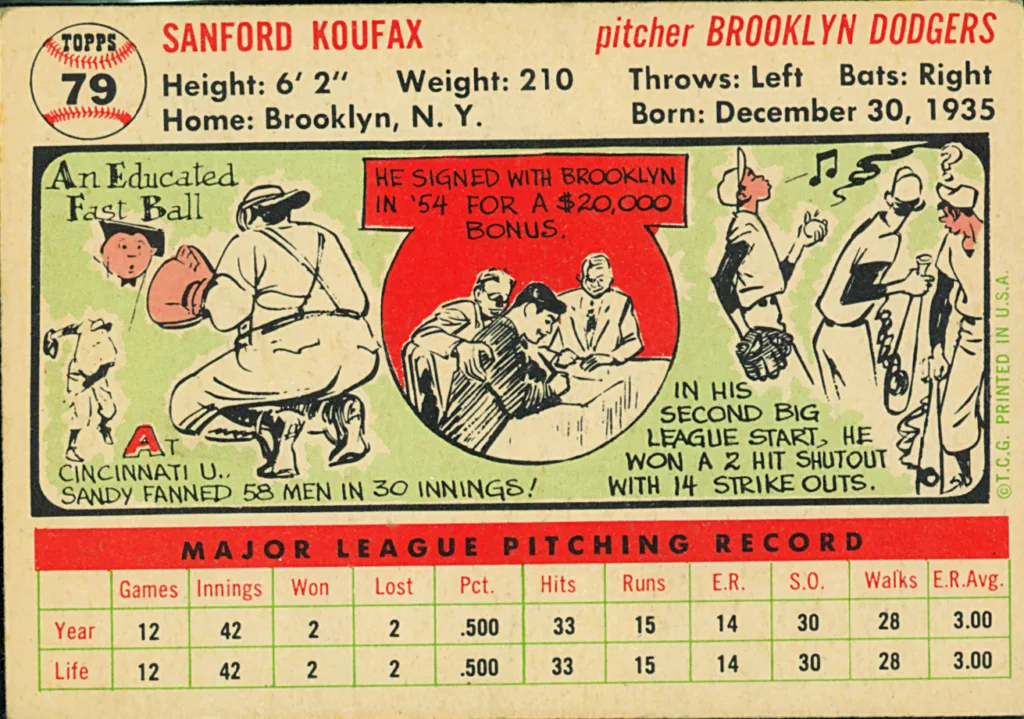
1956 Topps Baseball #79 Sandy Koufax card back
Card-backs were drawn by some of the leading cartoonists of the day and feature a three-panel storyboard with references to trivia involving player accomplishments, hobbies, and defensive prowess.
History and Nostalgia for Topps Baseball
As the oldest baby boomers approach their 80th birthdays, cards that once sold at the corner store for a nickel can now pay for (part of) a grandchild’s college education. These days, getting your hands on a 1956 Topps Mantle – or Aaron, Williams, Clemente, Mays – involves serious financial investment.
Still, casual collectors and American nostalgists can find beautiful examples – a diving Jim Busby or a sliding Don Mueller – for only a few dollars. The celebrated shots of Mickey Mantle and Roberto Clemente leaping at the outfield fence to rob an unknown hitter of a home run are not entirely unique. Check out Roy Sievers, with shades down, leaning backward to make the grab!
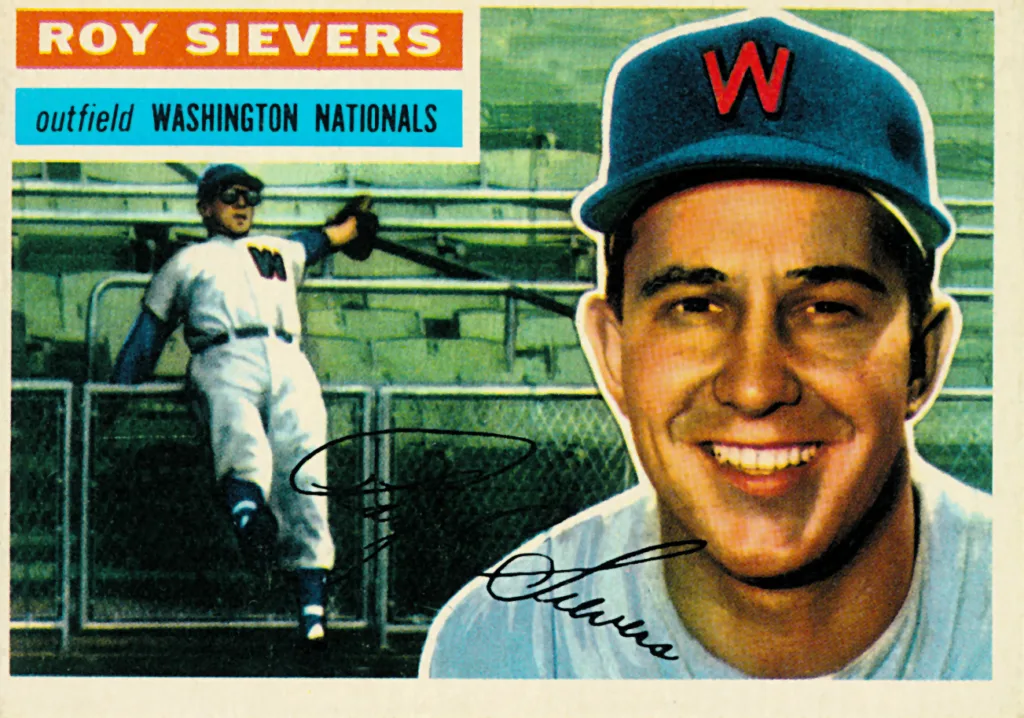
1956 Topps Baseball #75 Roy Sievers
In October of 1956, Don Larsen threw the only perfect game in World Series history, and the Yankees went on to defeat the Brooklyn Dodgers, who would move to Los Angeles the following year. It was the same year that General Mills introduced Cocoa Puffs, and Cecil B. DeMille’s The Ten Commandments won big at the box office. It’s not every year in American history that offers a comparable vibe.
There is financial value and then there is sentimental value; while one can be measured and recorded, the other is by nature elusive, perhaps even wholly subjective. Mysteriously, though, the 1956 cards seem self-consciously to bring these disparate concerns together. They highlight a changing American cultural landscape even as they emphasize the perennial green of the infield grass and the humanity of the players. They stand as a record of what was happening in baseball, but they also communicate something more about how America felt about itself in that age.